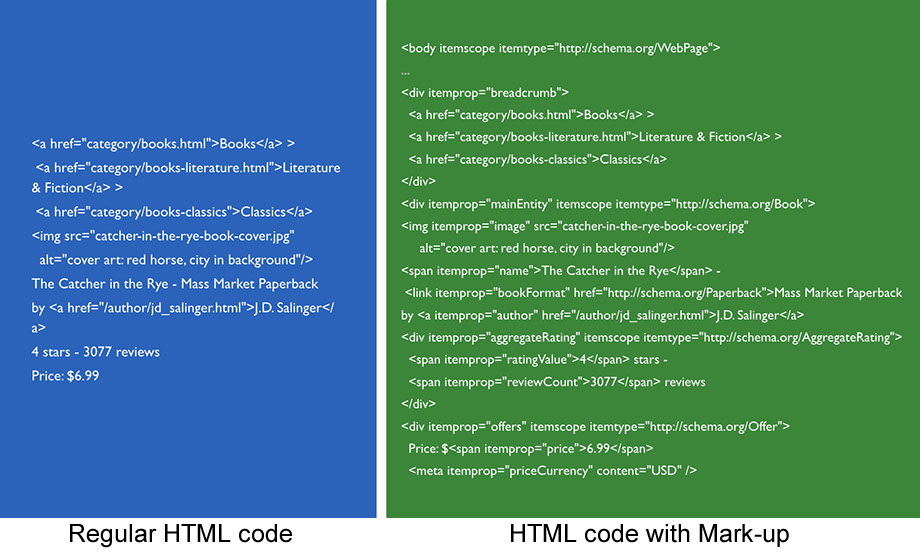Search engines constantly try to improve their search results by understanding the user’s intent behind the search query. Schema.org and mark-up techniques are one way of doing that. Mark-up is often referred to as structured data, but what is it?
Unstructured data is, in simple words, any content on a website. It indicates a text string describing a certain subject. To a user, it has a lot of meanings, and when read through, the useful information can be extracted. For a computer, which in this case would be a search engine crawler, this same text hasn’t got that much meaning – it is just a text string.
To make this data structured, we need to tell search engines what part of the text string means what exactly, e.g. what part of the text is referring to the contact details, who is the author, and what the content is about. Is it a news item, or a commercial text? Maybe a recipe? All of these pieces of information can be explained to a search engine through additional HTML code, called mark-up. Based on the mark-up microdata included in the HTML code, search engines can interpret the content of pages more effectively, and therefore serve more relevant results to the users on search results pages.
Mark-ups make your result stand out from other search snippets, and they help you perform better in organic search. This mark-up can help search engines understand the purpose of your site and the type of content you present, and through that display the relevant, marked-up results in a more appealing and well-organised way – serving the user’s intent. Google’s job is to ensure the user finds what they’re looking for. And our job, as webmasters that use mark-up, is to ensure that Google knows how to do that with our website.
Types of mark-up
There are two main types of mark-up:
- Breadcrumbs: Breadcrumbs are the navigation path to the current page from the home page of the site. Typically, they are placed just above the page content, and consist of hyperlinks indicating to the users which section of the site they are currently in, and allowing them to easily navigate to the previous main category.
- Ratings: This option is very common among pages presenting content that is typically voted for/rated.
If you’re interested in local SEO, you’ll be pleased to hear that mark-up can considerably help local SEO strategies. The most common and important information to mark-up is called NAP – this stands for name, address and phone number. This is important, as local businesses are more likely to appear online by their NAP than by the URL of their website.
Types of schema mark-up
Finally, let’s go over the main types of schema mark-up available:
- Google Data Highlighter. Data Highlighter is a Google tool designed for tagging parts of your website in order to teach Google what type of content they refer to. This is good for less advanced internet users, as it doesn’t require any technical knowledge.
- Schema.org. The best-known type of mark-up is Schema.org, which is a project created and sponsored by the biggest search engines: Google, Bing, Yahoo and Yandex. This collaboration aims to establish a standardised method of structuring the content, which will be correctly interpreted by all major search engines.
- Knowledge Graph. Knowledge graph is the ultimate way of using mark-up, going beyond just appealing search results towards machine learning. The Knowledge Graph consists of a box or a carousel that can take dozens of forms. Types of Knowledge Graph are: Knowledge Graph Panel, Answer Box and its variations, and the Carousel.
Natalia Witczyk
Latest posts by Natalia Witczyk (see all)
- Accelerated Mobile Pages: Google vs. Yandex vs. Baidu - June 18, 2018
- Mobile SEO on Google, Yandex and Baidu - May 25, 2018
- On-page SEO: An introduction to keywords, keyword mapping and on-page keyword optimisation - November 6, 2017






